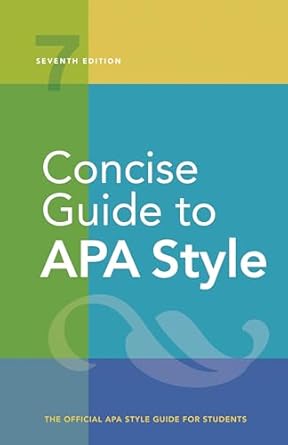[toc]
statistical symbols guide definitions usage
Concise Guide to APA Style: 7th Edition (OFFICIAL)
Page 151 Review
Understanding Statistical Symbols and Abbreviations: A Deep Dive
This excerpt from “Statistics and Equations CY 127” serves as a crucial reference guide for anyone navigating the complex world of statistical analysis.
The table meticulously outlines common abbreviations and symbols used in statistical hypothesis testing, reliability assessment, and various measures of relationship strength.
Let’s dissect some key entries:
Alpha (α): The Probability of a Type I Error
“at (alpha) in statistical hypothesis testing, the probability of making a Type | error; Cronbach’s index of internal consistency (a form of reliability)”.
Alpha (α) is a fundamental concept in hypothesis testing.
It represents the probability of rejecting the null hypothesis when it is actually true.
This is known as a Type I error.
Furthermore, α is also associated with Cronbach’s index, which assesses the internal consistency of a set of test items or scale.
Beta (β): The Probability of a Type II Error
“B (beta) in statistical hypothesis testing, the probability of making a Type Il error (1 — B denotes statistical power); population values of regression coefficients (with appropriate subscripts as needed)”.
Beta (β) denotes the probability of committing a Type II error.
This occurs when we fail to reject the null hypothesis when it is false.
Statistical power (1-β) represents the probability of correctly rejecting a false null hypothesis.
Beta also represents population values of regression coefficients.
Delta (Δ): Increment of Change
“A (capital increment of change delta)”.
Delta (Δ), represented by the capital Greek letter, signifies an increment of change.
It’s used to denote a difference or change in a variable.
Epsilon Squared (ε²): Strength of Relationship in ANOVA
“& (epsilon- measure of strength of relationship in analysis of variance squared)”.
Epsilon squared (ε²) is used to measure the strength of the relationship between variables in analysis of variance (ANOVA).
It indicates the proportion of variance in the dependent variable that is explained by the independent variable.
Eta Squared (η²): Another Measure of Relationship Strength
“7? (eta- measure of strength of relationship squared)”.
Similar to epsilon squared, eta squared (η²) quantifies the proportion of variance explained, providing another measure of the effect size or strength of association.
Theta (θ): Generic Effect Size in Meta-Analysis
“0, (theta k) generic effect size in meta-analysis”.
Theta (θ), often with a subscript, represents a generic effect size commonly used in meta-analysis.
Meta-analysis combines the results of multiple studies to arrive at a more precise estimate of the effect.
Kappa (κ): Agreement Corrected for Chance
“Kk (kappa) Cohen’s measure of agreement corrected for chance agreement”.
Cohen’s kappa (κ) is a statistic that measures inter-rater agreement or the agreement between two methods, while correcting for the level of agreement that could be expected due to chance.
Mu (μ): Population Mean
“yu (mu) population mean; expected value”.
Mu (μ) denotes the population mean, a crucial parameter in statistical inference.
It represents the average value of a variable in the entire population.
Nu (ν): Degrees of Freedom
“v (nu) degrees of freedom”.
Nu (ν) stands for degrees of freedom, which is the number of independent pieces of information available to estimate a parameter.
It’s vital for hypothesis testing and determining the appropriate statistical distribution.
Rho (ρ): Population Correlation
“p (rho) population product-moment correlation”.
Rho (ρ) represents the population product-moment correlation, also known as Pearson’s correlation coefficient.
It measures the strength and direction of the linear relationship between two continuous variables.
Rho I (ρI): Population Intraclass Correlation
“p! (rho |) population intraclass correlation”.
The Intraclass Correlation (ρI) is used to measure the similarity or resemblance of data structured in groups.
It quantifies the proportion of variance that is attributable to group membership.
Sigma (σ): Population Standard Deviation
“o (sigma) population standard deviation”.
Sigma (σ) represents the population standard deviation, which quantifies the spread or dispersion of data around the population mean.
Sigma Squared (σ²): Population Variance
“0? (sigma- population variance squared q ) i”.
Sigma squared (σ²) denotes the population variance, the square of the standard deviation.
It measures the average squared deviation from the mean.
Capital Sigma (Σ): Variance-Covariance Matrix
“> (capital population variance—covariance matrix sigma) ie”.
Capital Sigma (Σ) represents the population variance-covariance matrix.
It contains the variances of the variables along the diagonal and the covariances between pairs of variables off the diagonal.
Chi-Squared (χ²): Distribution and Test
“2 (chi- the chi-square distribution; a statistical test based on the squared) chi-square distribution; the sample value of the chi-square test statistic”.
Chi-squared (χ²) refers to both the chi-square distribution and statistical tests based on this distribution.
These tests are frequently employed to assess the independence of categorical variables or the goodness-of-fit of a model.
Omega Squared (ω²): Strength of Statistical Relationship
“@* (omega- strength of a statistical relationship squared)”.
Omega squared (ω²) is another measure of effect size, specifically estimating the proportion of variance in the dependent variable accounted for by the independent variable.
Mathematical Symbols
“Jal absolute value of a > (capital summation sigma)”.
The excerpt also mentions absolute value denoted by |a|, as well summation, represented by the capital sigma symbol, indicating the sum of a series of values.
In conclusion, this table is an indispensable resource for understanding the language of statistics.
Proper interpretation of these symbols is essential for conducting and interpreting statistical analyses effectively.
Buy full ebook for only $18: https://www.lulu.com/shop/american-psychological-association/concise-guide-to-apa-style-7th-edition-official/ebook/product-rmzpq54.html?page=1&pageSize=4
Statistical Symbols Guide Definitions Usage
Read more: Avoid Grammar Errors: Dangling Modifiers & Parallelism


Leave a Reply